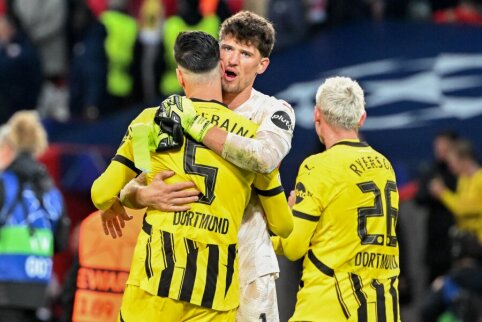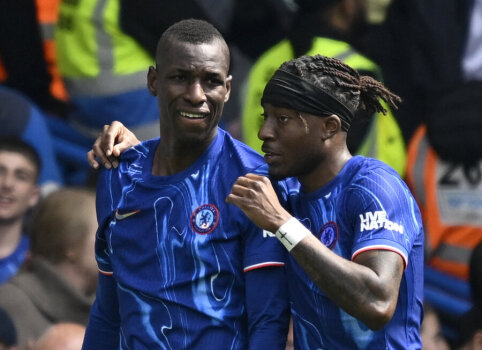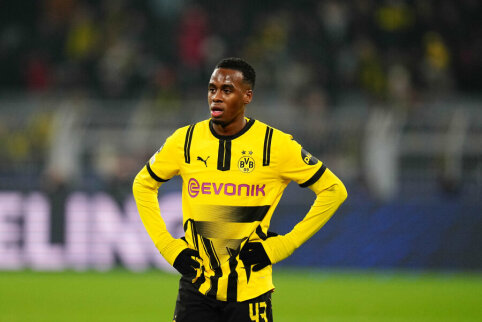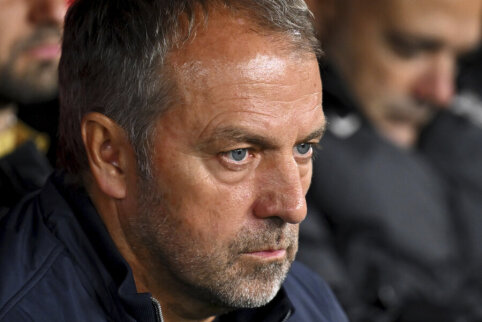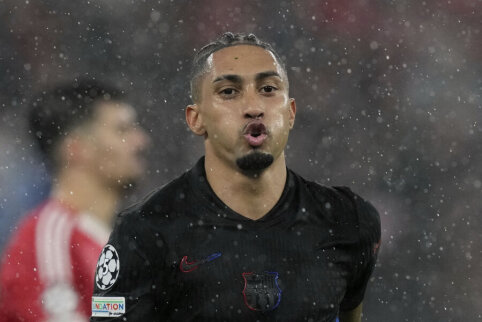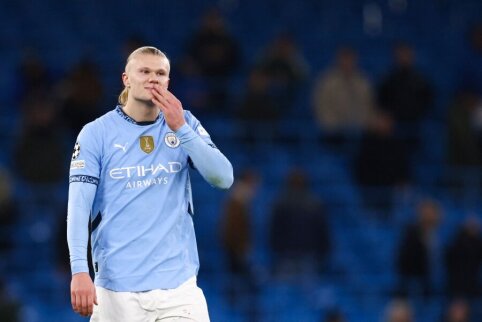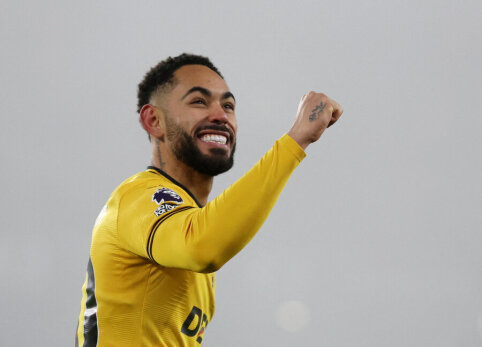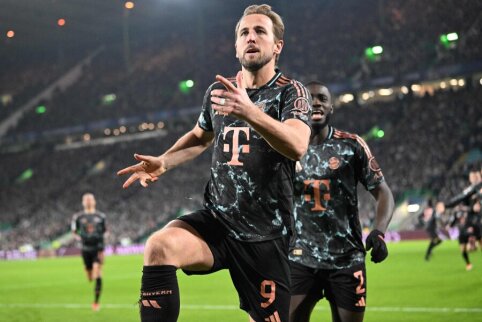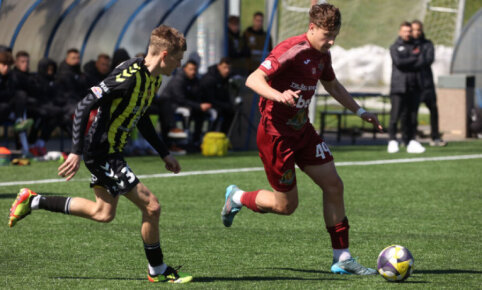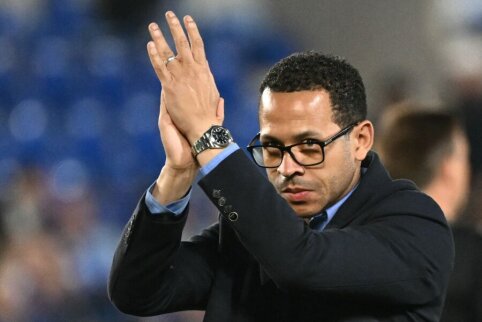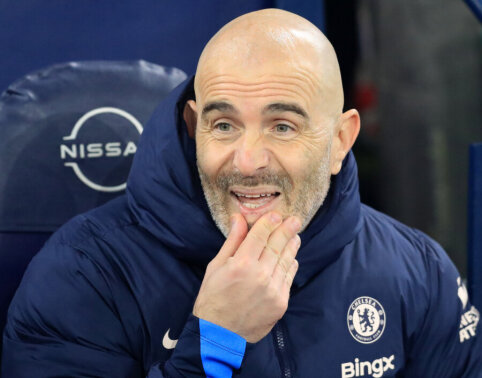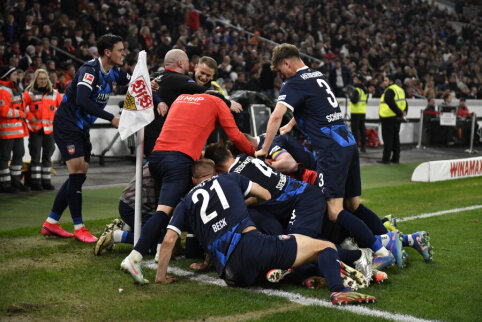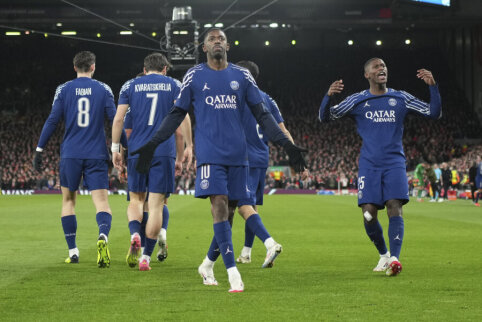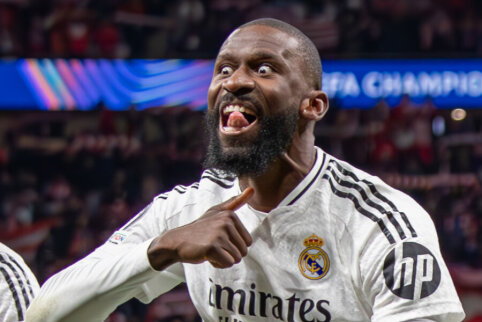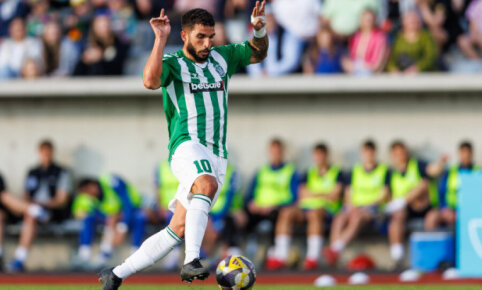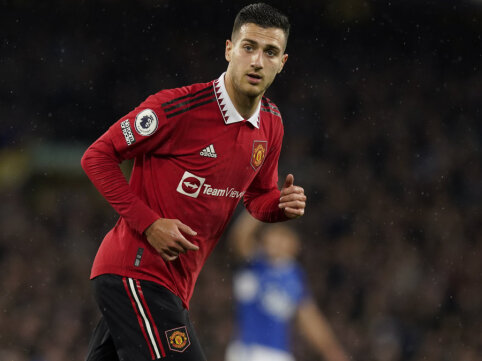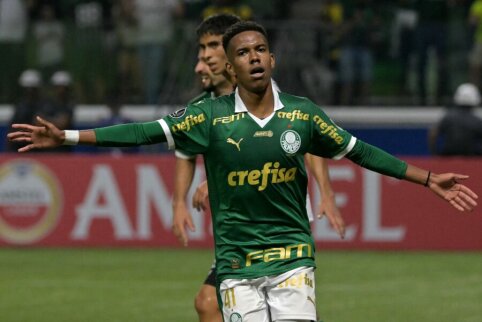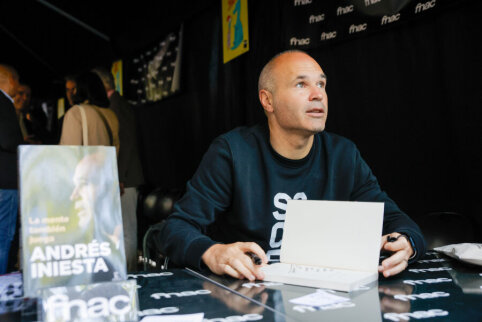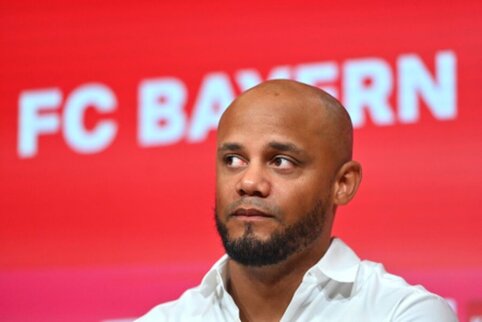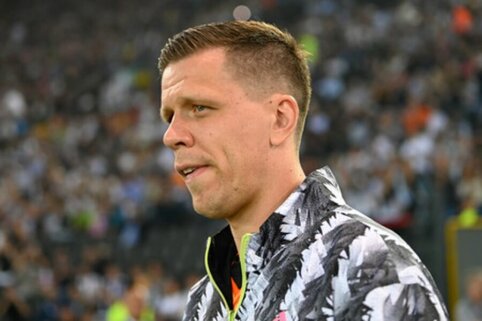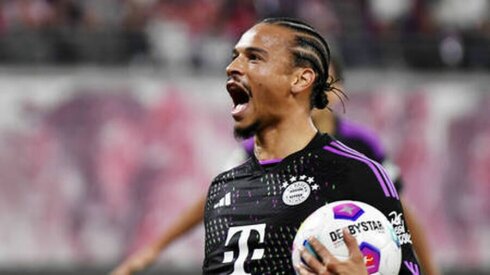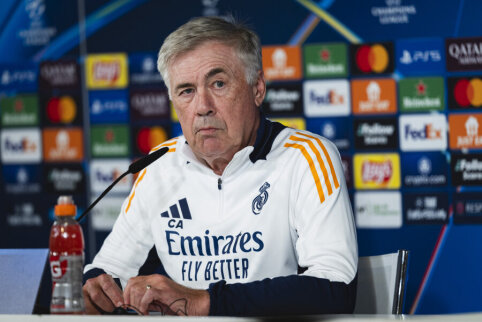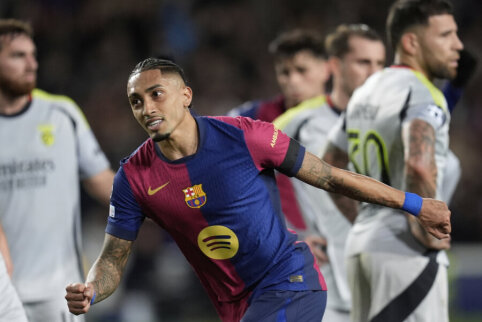 © EuroFootball.com
© EuroFootball.com
In the column "Tribune" of EuroFootball.com, visitor Dalius decided to respond to the "Man Utd" story already published on the website and, by extending the theme of famous club histories, offers you to read an informative article about the newly emerging French giant - "Lyon" club, which is already seriously aiming for the elite of European football. Madrid's "Real," in the Champions League draw ceremony, received opponents (the original name of the club is "Olympique Lyonnais"), certainly did not rejoice - as it is one of the strongest clubs in Europe. The fears of the "royals" came true: the first match ended with a 2-0 victory for "Lyon." After that, a 3-0 victory against "Steaua" and two matches with Kiev's "Dynamo" await, ensuring an easy advancement to the next stage. And even though "Lions" have not yet had their time of victories in Europe, five consecutive French champion titles speak volumes about the team's strength - after all, France is part of the "Big Five of European football." This club deserves sympathy as a fright of authorities, for beautiful play, for excellent players who have blossomed and found a place in Lyon. And most importantly, the club was the first in France to not start selling its players after the season, but only strengthened the squad. Well, if they did sell, it was for such a sum that it echoed throughout Europe. Fans do not need to be reminded of sales like Michael Essien or Mahamadou Diarra... And Lyon especially deserves great sympathy because it intruded into the ranks of the major European clubs without being a well-known and respected club in the past, without having the annual guarantee of hundreds of millions of euros in support, ensuring a "super" coach, acquiring "super" players...and within a year - creating a "super" fanbase. When in 1987 an unknown businessman in France, Jean-Michel Aulas, bought a control package of shares of a far from the most successful French club, and declared that he would make his purchase the strongest in France and Europe, few laughed. They simply wagged a finger with a smile. Interestingly, journalists soon leaked and widely described that the new club's messiah president had recently been treated by a psychiatrist... Well, if you, dear readers, have been "hooked" and intrigued by this introduction, you can start the narrative... A club without victories and history The French have always looked suspiciously at everything English since the times of Joan of Arc, so football had a hard time making its way. Only in 1917, when the rest of Europe was already enjoying this game, in the textile city of Lyon, known for its revolutionary traditions, a football club was created. Later, another one was created in the Lyon suburb of Villeurbanne. And only in 1933 did these two clubs merge. Then they separated again... And then they merged again. Finally, in 1950, "Olympique Lyonnais" was founded, or, since it was customary in France to name clubs after cities, simply "Lyon." "Lyon" initially played in red and white shirts. Since the club was supported by the Lyon municipality, it was decided to honor the city by adorning them in its heraldic colors: red and blue. The city's coat of arms - a lion standing on its hind legs - also appeared on the chest. Along with the coat of arms, the unofficial nickname of the club changed - from "weavers" the footballers gradually became "lions." In the first season, "Lyon" became champions of the second division and broke into the French football "nobility." The people of Lyon rejoiced, but after a year their team returned to the second division. And so a few times the flights to "Ligue 1" were replaced by declines. Nevertheless, in 1964, 1967, and 1973, "Lyon" won the French Cup, and in 1964 even played in the UEFA Cup semifinal. The club featured such celebrities as Jean Jorkaeff, Serge Chiesa known as "Little Mozart," and Bernard Lacombe. However, the team remained in the shadow of "Saint-Etienne", and later of "Marseille" and "Bordeaux." The evolution of the team In 1987, Jean-Michel Aulas, who acquired the team, invited the relatively unknown young coach Raymond Domenech to work. The team became a strong middle-class team, and the climb to the top began with the former French team dispatcher of the Platini era, the black Jean Tigana, becoming the coach. In two seasons under his leadership, "Lyon" became the runner-up in France. By the end of the 20th century, "Lyon" was constantly participating in the French and European cup semifinals, with players like Ludovic Giuly and Florian Maurice. However, in line with the French tradition of a well-performing club... sold its leaders. Maurice leaves for PSG, and Giuly to "Monaco." This sell-off actually benefited the club because President Aulas decided to change the strategy. In order to retain the best players, he increased investments in the club to $130 million, significantly raised salaries and thus could attract the best French players to the club. A great example is the goalkeeper Gregory Coupet, who came from the struggling team of "Saint Etienne." The main goalkeeper of "Lyon," the hot-blooded Corsican Pasqualis Olmetta, clashed with the coach, and the other goalkeeper, Lucas Borrelli, crashed his car into a tanker and burned alive... Coupet not only helped the club in difficult times but also became a favorite of the fans, competing with the extravagant Fabien Barthez for the title of the best French goalkeeper. Another important acquisition for "Lyon" was the Brazilian striker Sonny Anderson, who broke the French transfer record. Having not made a splash at "Barcelona," he became the best striker in France in 1999 with 23 goals, and in 2001 with 22. These two acquisitions showed a new strategy for "Lyon" - to rely on French and immigrants from the country's colonies as well as Brazilians (and psychologically close to them Portuguese). This helped avoid conflicts within the club between players of different nationalities. The Reign of the Lions In July 2002, the little-known young coach Paul Le Guen replaced Jacques Santini as head coach of "Lyon." The team welcomed Juninho Pernambucano, the "new Thuram" Eric Abidal, and the versatile Florent Malouda. After an unsuccessful season, Sylvain Wiltord returned from "Arsenal." Sidney Govou became a true master. The defense of Lyon was cemented by Brazilians Cris and Cacapa. The midfield became impenetrable with Michael Essien found at "Bastia" and Mahamadou Diarra dug up from "Vitesse." Le Guen gained fame as a coach who could bring out the best traits of his players. And even without Essien, whom Chelsea still bought from "Lyon," and this year without Diarra, who transferred to Real, "Lyon" continues to look powerful. Leading in France, they play excellently in the Champions League. And regardless of the fact that they created the team and implemented an excellent attacking style, Le Guen left Lyon. In his place came 58-year-old Gerard Houllier, who had suffered a heart attack and failed with Liverpool. "Thank you to Paul; he did so much in Lyon that I just need not to ruin the fruits of his work," said the new coach. The team is already formed, players are bought only with precise knowledge of what is needed, and in what position the player will be most useful. One of the toughest tests for the new coach Gerard Houllier was last winter when five (!) defenders suffered injuries in quick succession. Houllier brought back Patrick Muller from Switzerland and, most importantly, trusted young backup team player Francois Clerc - he is now called up to the French national team... "Lyon" once again, for the fifth time, won the French champion titles, pulling 15 points ahead of the closest pursuer, "Bordeaux." Goalkeeper Gregory Coupet, unfairly pushed aside by the national team, was one of the most useful players on the team. Last season, he repelled 125 shots on goal. Only missing 24... By the way, Lyon's opponents should be interested in Lyon's statistics: most goals are scored in the opening minutes of the second half: from 46 to 60 minutes. Opponents usually score against Lyon in the first 15 minutes. This year, Lyon is not ready to slow down, but without another French champion title, the team's goal is finally to achieve something in the Champions League. The loss of Mahamadou Diarra was filled by the acquisition of another talented Diarra - now the midfield is controlled by Alou Diarra. Jeremy Toulalan came from "Nantes," Kim Kallstrom from "Rennes," and Sebastien Squillaci from "Monaco." It seemed that this year there would be a tougher fight in "Ligue 1" since "Lille," "Marseille" strengthened, but "Lyon" after 8 rounds has 7 victories and one draw, with three points ahead of closest pursuer "Marseille." Little from Pernambuco However, Lyon's leader is one and indisputable - the Brazilian Antonio Augusto Ribeiro Reis, acquired in 2001. Don't know him? Well, in the Ribeiro family, he was the youngest, so he decided to call himself Juninho ("Little One"). And since in Brazil they hardly ever saw "Little Juninhos" or "Youngsters" Junior, the Brazilian made his home state name a nickname. Do you know him now? Yes, Juninho Pernambucano. Born in 1975, the footballer, who reached the age of twenty, started playing for "Vasco da Gama," and over 6 years representing the "admirals" (as the Brazilians call the footballers of "Vasco da Gama"), not only secured a place in the national team but also became famous as a set-piece master. Milan's "Inter" was interested in the defensive midfielder, but the Italians hesitated for too long, and "Vasco da Gama" needed money, so Juninho ended up in Lyon. "I'm ashamed to admit that living in Brazil, I not only never heard of such a team but didn't even suspect that there was such a city - Lyon," confessed Juninho. As soon as the Brazilian arrived in Lyon, a golden shower rained down on the club. Juninho Pernambucano, like every Brazilian, is technical. He has excellent playmaking, or, as is now commonly said, "creative midfield" qualities. He is not afraid of hard work in defense. However, the most important characteristic of Lyon's leader is his penalty kicks and precise corner kicks. Juninho knows no distance. The "wall" of 5-7 opponents set up in front of him means nothing to him. He does not care that there is an experienced goalkeeper between the ball and the goal. Almost every shot by Juninho is dangerous. It seems the ball is moving in a predictable, rising trajectory, but the speed of the unleashing takes the ball... and precisely into that corner where the goalkeeper cannot reach the ball. And just before reaching the goal, the ball changes trajectory... "Only the devil knows how Juninho can shoot like that," said one of the goalkeepers who missed a goal from 40 meters away, Stefano Pratto. - I calculated everything correctly, resisted correctly, jumped in time and stretched my arms towards the ball. Just before me, the ball suddenly veered down, and I didn't have time to lower my hands to push it away...". Teammate Tiago said: "Juninho can send the ball wherever he wants. Once I placed a water bottle in the field during a game. Juninho knocked it down from a distance of 45 meters. No other player could do the same." A few years ago, there was a debate in Europe about who was better at scoring penalties - David Beckham, Roberto Carlos, or Juninho. Now no one argues anymore, Juninho is only compared with past legends like Koeman, Platini, or Rivaldo. Juninho himself willingly reveals the secret of his trademark shots: "In every training session, I perform no less than a hundred shots." Simple, isn't it?
